I’m working on a multi-genre original RPG called ‘Cinematic’ that will have traits and skills with an optional stunt system (that you can use or ignore). There will be a Sci Fi implementation of Cinematic called Imperium RPG. First let’s talk about the generic Cinematic RPG core system.
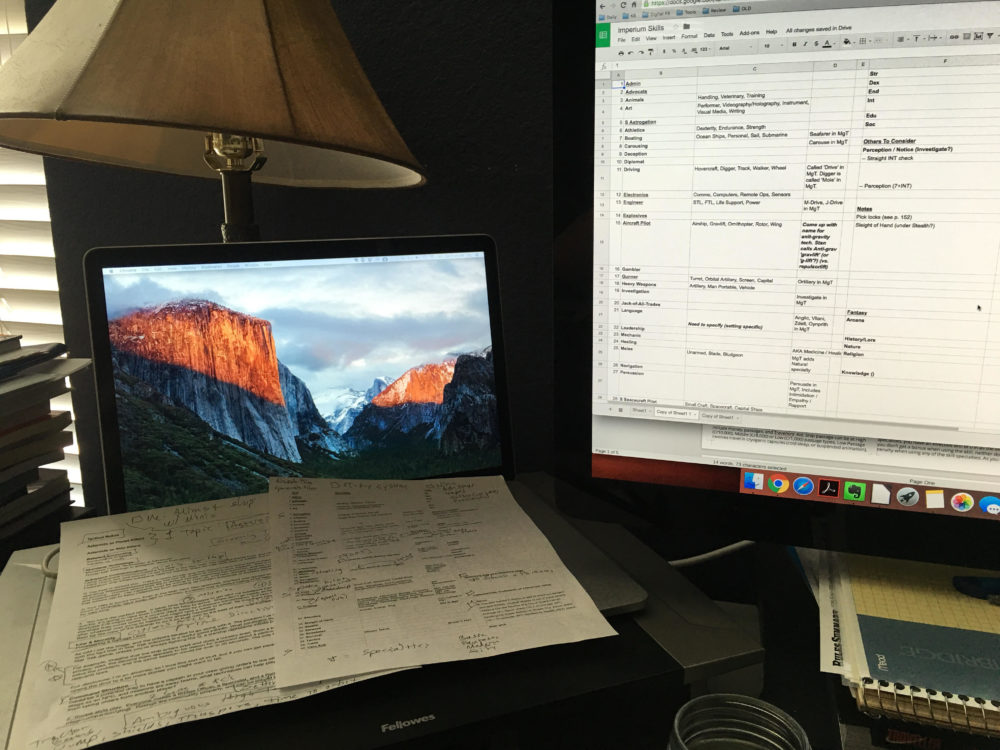
Stan designing the next version of Cinematic and Imperium RPGs
Two Attributes
Cinematic will work like Cortex Plus, Traveller, and other systems with two attribute that you add together for most checks. In Cinematic, you have 6 Traits: Strength, Dexterity, Endurance, Intelligence, Education, and Social. They work very much like D&D ability scores. You’ll also have up to 40 skills depending on the setting. For most checks you’ll add your trait modifier (which will range from -2 to +2) and your skill rank (which will range from -3 if you’re not trained in a skill, to +3). Total possible ranges based on trait + skill rank would be -5 to +5.
Core Mechanic
The core mechanic is this:
Roll 2d6, add relevant die modifiers (DMs). If you get an 8+ you succeed.
So a character with a Dexterity modifier of +2 and a Shooting (Slug) skill of +1 will get a +3 DM when shooting a slugged weapon like a rifle. They’ll hit on a 5 or better.
Adding Shift to Damage
If you score higher than the target number, the difference is called a Shift. In the above example, the character is shooting their gun, gets a +3 DM from their Dexterity modifier and Shooting (Slug) skill, and rolls a 5 and a 6 on their two dice. Their total score is 14, a Shift of 6 over the target number of 8. The 6 is added to the damage roll.
Skills in Cinematic Settings
Now let’s take a look at the skill system. In the most generic flavor of Cinematic RPG, you have the following skill lists which differ by setting. Some skills have specialties listed after the skill (I’ll explain more about who specialties work in the future). Cinematic will be like Chaosium’s Basic Roleplaying RPG, Fate Core RPG or Margaret Weiss’s Cortex Plus RPG where in most cases you’ll tweak the rules and skill list for each setting.
Basic Skill List
- Animals — Handling, Veterinary, Training
- Art — Performer, Instrument, Visual Media, Writing [in modern settings add Videography, and in Sci Fi settings add Holography]
- Athletics — Dexterity, Endurance, Strength
- Boating — Ocean Ships, Personal, Sail [in modern or Sci Fi settings add Submarine]
- Carousing
- Deception
- Diplomat
- Gambler
- Healing
- Investigation
- Language — [Setting specific specialties]
- Leadership
- Melee — Unarmed, Blade, Bludgeon
- Navigation
- Notice
- Persuasion
- Profession — [Setting specific specialties; in Sci Fi they are Belter, Biologicals, Civil Engineering, Construction, Hydroponics, Polymers]
- Reconnaissance
- Shooting — Archaic [Modern setting adds Slug; Sci Fi setting adds Energy]
- Sleight of Hand
- Stealth
- Streetwise
- Survival
- Tactics — Military, Naval
- Trade
Fantasy
In Fantasy settings, we add the following skills:
- Arcana
- Knowledge — [Setting specific specialties]
- Lore
- Nature
- Religion
Modern
In Modern or Sci Fi settings, we add the following skills:
- Admin
- Advocate
- Aircraft Pilot — Airship, Rotor, Wing [Some Sci Fi setting add Gravlift, Ornithopter]
- Driving — Digger, Track,Wheel [Some Sci Fi setting add Hovercraft, Walker]
- Electronics — Comms, Computers, Remote Ops, Sensors
- Engineer — [Some Sci Fi settings add STL, FTL, Life Support, Power]
- Explosives
- Gunner — Turret [Some Sci Fi setting add Orbital Artillary, Screen, Capital]
- Heavy Weapons — Artillery, Man Portable, Vehicle
- Mechanic
- Science — Archaeology, Astronomy, Biology, Chemistry, Cosmology, Cybernetics, Economics, Genetics, History, Linguistics, Philosophy, Physics, Planetology, Psychology, Robotics [Some Sci Fi setting add Psionology, Xenology]
- Steward
Sci Fi
Finally, in Sci Fi settings, we add the following skills:
- Astrogation
- Spacecraft Pilot — Small Craft, Spacecraft, Capital Ships
- Vacc Suit
Skills in Imperium
The Imperium RPG has the following 40 skills:
- Admin
- Advocate
- Aircraft Pilot — Airship, Gravlift, Ornithopter, Rotor, Wing
- Animals — Handling, Veterinary, Training
- Art — Performer, Instrument, Videography/Holography, Visual Media, Writing
- Astrogation
- Athletics — Dexterity, Endurance, Strength
- Boating — Ocean Ships, Personal, Sail, Submarine
- Carousing
- Deception
- Diplomat
- Driving — Hovercraft, Digger, Track, Walker, Wheel
- Electronics — Comms, Computers, Remote Ops, Sensors
- Engineer — STL, FTL, Life Support, Power
- Explosives
- Gambler
- Gunner — Turret, Orbital Artillary, Screen, Capital
- Healing
- Heavy Weapons — Artillery, Man Portable, Vehicle
- Investigation
- Language — Setting specific language skill specialties
- Leadership
- Mechanic
- Melee — Unarmed, Blade, Bludgeon
- Navigation
- Notice
- Persuasion
- Profession — Belter, Biologicals, Civil Engineering, Construction, Hydroponics, Polymers
- Reconnaissance
- Science — Archaeology, Astronomy, Biology, Chemistry, Cosmology, Cybernetics, Economics, Genetics, History, Linguistics, Philosophy, Physics, Planetology, Psionology, Psychology, Robotics, Xenology
- Shooting — Archaic, Energy, Slug
- Sleight of Hand
- Spacecraft Pilot — Small Craft, Spacecraft, Capital Ships
- Stealth
- Steward
- Streetwise
- Survival
- Tactics — Military, Naval
- Trade
- Vacc Suit
[Edit: since I first posted this I removed Jack-of-All-Trades and added in Notice].
That’s it for now. I am working on a MVP (minimum viable product) set of Imperium rules this week which I hope to beta-test on Thursday’s one-shot game. 🙂
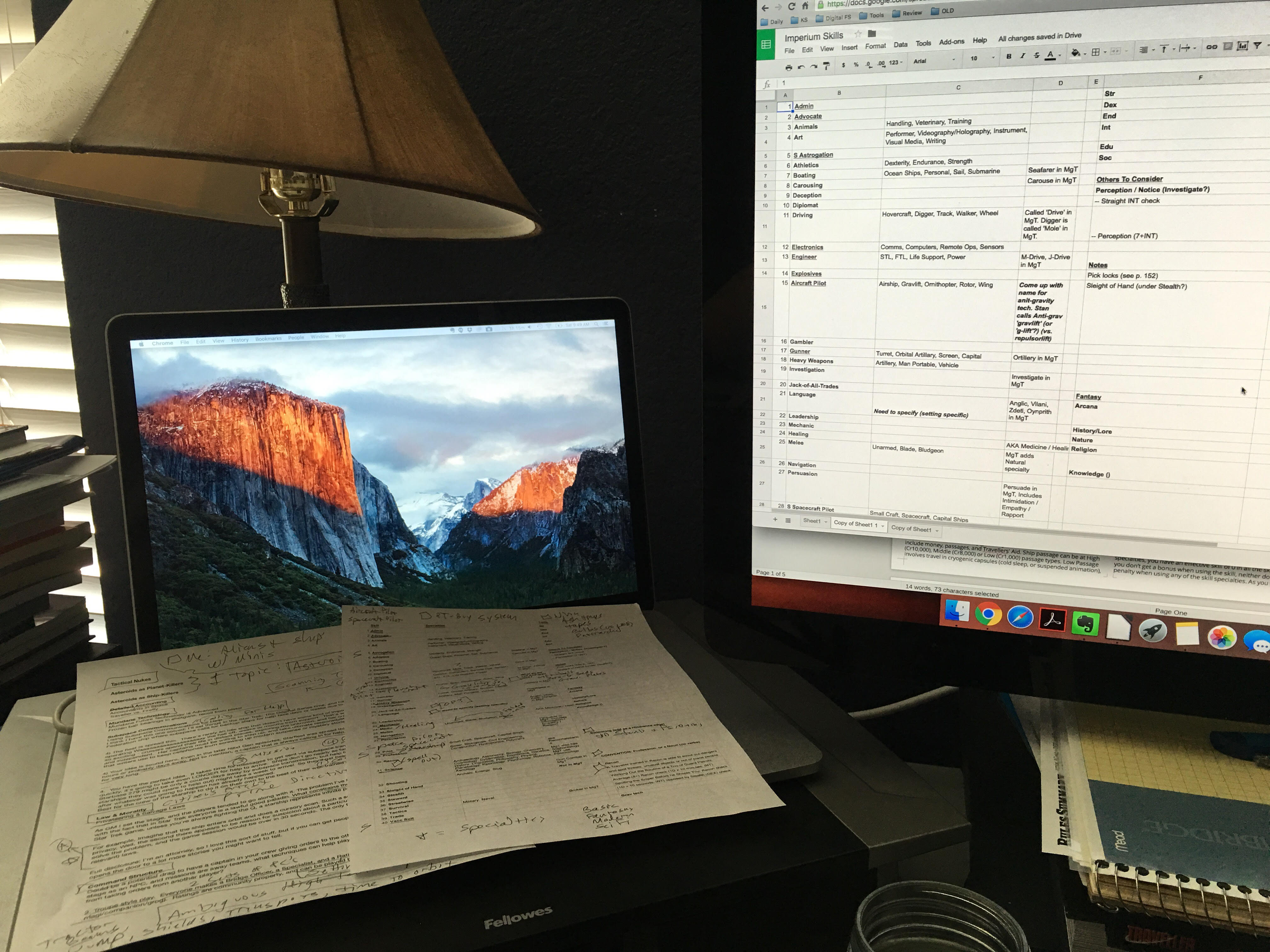


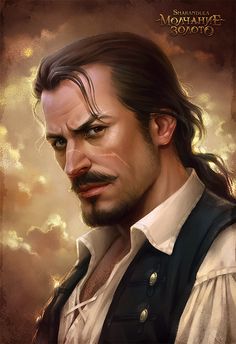
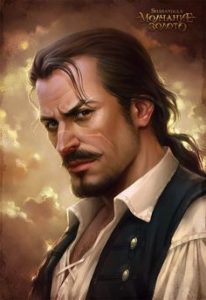

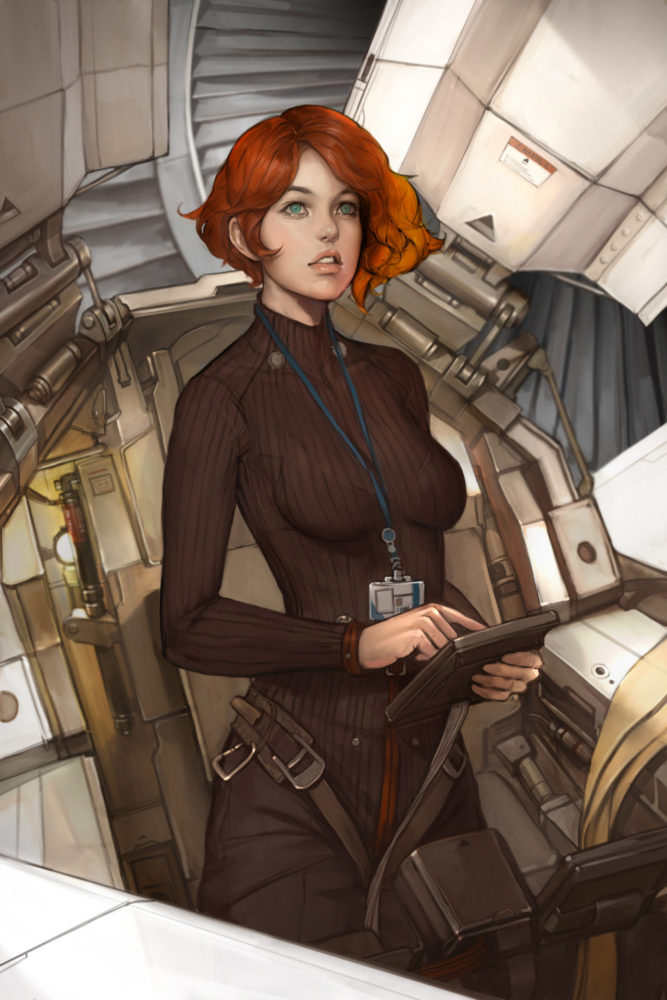 Starships
Starships


Recent Comments